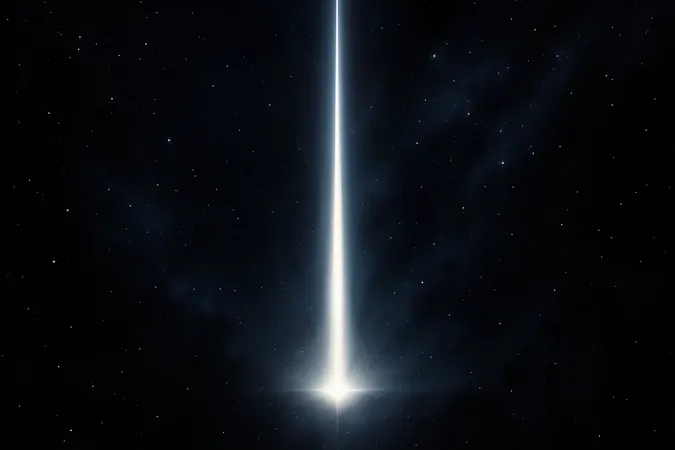
A Stunning Discovery: Massive Gravity Hole in the Indian Ocean Could Rewrite Earth's Evolution
2025-05-08
Author: Jacques
Unveiling the Indian Ocean's Mystery
Beneath the expansive Indian Ocean lies an extraordinary and enigmatic phenomenon—a colossal gravitational anomaly that has been a puzzle for scientists for decades. Known as the Indian Ocean Geoid Low (IOGL), this region features a staggering dip of 106 meters lower than its surroundings, resulting in the weakest gravitational forces found anywhere on Earth.
What Makes the IOGL So Unique?
The IOGL is a geophysical anomaly that has captured the attention of researchers and geophysicists for years. Unlike typical areas influenced by tectonic shifts and variations in mass, the IOGL is defined by its unexpectedly lower gravitational pull. This anomaly has led to lower sea levels that defy conventional oceanographic expectations.
According to Professor Attreyee Ghosh from the Indian Institute of Science in Bangalore, this anomaly is one of the greatest mysteries in Earth sciences, noting, "It is the lowest geoid/gravity anomaly on Earth, and up until this point, no consensus existed on its origin." Over the years, theories have emerged, ranging from subducted tectonic plates sinking into the mantle to complex mantle dynamics.
Tracing the Anomaly's Origins
In a groundbreaking study published in Geophysical Research Letters, scientists have finally traced the origins of the IOGL. Using cutting-edge computer simulations and geodynamic models, researchers explored over 140 million years of tectonic and mantle processes that shaped this region.
The findings indicate that the anomaly is closely tied to mantle convection processes, where material from deep within the Earth rises. Hot, low-density material from the depths of the mantle—potentially connected to the African superplume—is likely at the heart of this anomaly.
Insights from Deep Below
Employing seismic imaging and advanced computer modeling, scientists have delved deep into the Earth's crust, uncovering that the gravity anomaly stems from a mass deficit in the mantle directly beneath the IOGL. This deficit is characterized by an accumulation of lighter, hotter material spanning depths of 300 km to nearly 900 km.
A Geological Journey Through Time
The IOGL’s origins are entrenched in geological history. The Indian tectonic plate was once part of a larger supercontinent. As it gradually drifted northward, it closed a gap with the Asian plate, leading to the gradual disappearance of a vast ocean. The subduction of the oceanic plate triggered mantle plumes, pulling lighter material closer to the surface and contributing to the gravity anomaly we observe today.
Professor Ghosh elaborates, "A geoid low is typically caused by a mass deficit in the deep mantle. Our findings indicate that this low is due to hot, light material extending from 300 km to around 900 km deep in the northern Indian Ocean, likely linked to the African superplume."
What Lies Ahead for the IOGL?
A pressing question remains: will the Indian Ocean Geoid Low persist, or is it destined to fade away? The research team suggests that this anomaly potentially formed around 20 million years ago, which is relatively recent in geological terms. However, its future remains uncertain.
As tectonic plates and mantle dynamics evolve, the destiny of the IOGL hangs in the balance. Professor Ghosh notes, "It could endure for a long time. Conversely, the movements of the plates may lead to its disappearance in the coming hundreds of millions of years."









 Brasil (PT)
Brasil (PT)
 Canada (EN)
Canada (EN)
 Chile (ES)
Chile (ES)
 Česko (CS)
Česko (CS)
 대한민국 (KO)
대한민국 (KO)
 España (ES)
España (ES)
 France (FR)
France (FR)
 Hong Kong (EN)
Hong Kong (EN)
 Italia (IT)
Italia (IT)
 日本 (JA)
日本 (JA)
 Magyarország (HU)
Magyarország (HU)
 Norge (NO)
Norge (NO)
 Polska (PL)
Polska (PL)
 Schweiz (DE)
Schweiz (DE)
 Singapore (EN)
Singapore (EN)
 Sverige (SV)
Sverige (SV)
 Suomi (FI)
Suomi (FI)
 Türkiye (TR)
Türkiye (TR)
 الإمارات العربية المتحدة (AR)
الإمارات العربية المتحدة (AR)